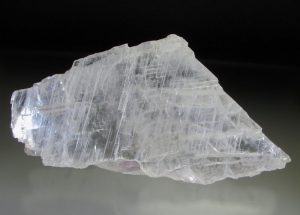(What is the Gypsum (CaSO4
Gypsum (CaSO4) – powder
Gypsum is a naturally occurring mineral that is made up of calcium sulfate and water (CaSO4+2H2O) that is sometimes called hydrous calcium sulfate. It is the mineral calcium sulfate with two water molecules attached. By weight it is 79% calcium sulfate and 21% water. Gypsum has 23% calcium and 18% sulfur and its solubility is 150 times that of limestone, hence it is a natural source of plant nutrients. Gypsum naturally occurs in sedimentary deposits from ancient sea beds. Gypsum is mined and made into many products like drywall used in construction, agriculture and industry. It is also a by-product of many industrial processes
Gypsum is also used as a generic name for many types of sheet products made of a non-combustible core with a paper surfacing that adds strength. These include drywall, ceiling tiles, partitions, etc. whose strength is directly related to its thickness and a few trace materials
Types and Sources of Gypsum
There are several types of naturally occurring gypsum, and many industrial processes also produce gypsum as a by-product of their systems such as phosphoric acid and citric acid manufacture
Mined Gypsum
Mined gypsum is found at various locations around the world. In North America there are gypsum deposits from Canada to Texas and in many Western States. Chemically raw mined gypsum is primarily calcium sulfate hydrated with water molecules in its chemical structure. Other materials and chemicals in mined gypsum may be small amounts of sand or clay particles and a few trace elements. The trace elements may be boron or iron to arsenic and lead and varies with each deposit. Many deposits in Canada have arsenic while those in Texas may have very little. Primarily mined gypsum is very safe to use and a great amendment for many soils
Flue Gas Desulphurization (FGD) gypsum and Spray-Dry Absorption materials – SDA
It is produced by removal of waste gases from the smokestacks from burning of coal and other materials. Approximately 20 million tons of FGD (flue gas desulphurization) residues are produced annually in the USA. These materials are high in calcium sulfate (gypsum) or can be easily converted to calcium sulfate. It may also contain sodium chloride (NaCl), magnesium oxide (MgO), calcium chloride (CaCl), phosphoric oxide P2O5, calcium carbonate (CaCO3), silicone dioxide (SiO2), and other by-products such as fluorine (fluoride compounds). Currently, about 7% is recovered and the rest is either stored in lagoons or landfilled
However, there are other concerns with the use of calcium sulfate, including a possible deficiency of magnesium (Mg) caused by replacement by calcium (Ca), excessive sulfur (S) in the plants, decreased phosphorous (P) availability, increased levels of aluminum (Al) in ground or surface waters due to leaching from the soil, and contamination from impurities within the gypsum, such as boron (B) or heavy metals. Some studies on SDA gypsum have shown that it is harmful to plants. Depending on the source, it may contain significant amount of radioactive Radon (Ra). This type of gypsum varies greatly in quality and contaminates
FGD is more soluble than mined gypsum hence it works much faster for removal of aluminum and salts. Its best use is for hardpans in highly weathered soils
Phosphogypsum
It is a co-product from wet-acid production of phosphoric acid from rock phosphate. It is mainly CaSO4+2H2O with small amounts of rock phosphate, sand, and clay. It tends to be a very small particle size and blows easily when dry (unless pelleted). When phosphogypsum is moist it is friable with a slick feel. Due to impurities (sulfuric, phosphoric, fluosilicic or hydrofluoric acids) it tends to be highly acidic between 2-5 pH. It may contain radon or radio nuclides and usage be restricted by EPA guidelines. Depending on where the rock phosphate is mined, it may also contain uranium residues. Other toxic chemicals, depending on the rock sources mined, may be present (radium, radon, radioactive lead, polonium, thorium, etc.)
Pickle Gypsum
This is produced from neutralization of waste sulfuric acid by limestone or lime in pickle production. Generally it is pure gypsum with a few trace elements
Titanogypsum – byproduct from manufacturing titanium dioxide
Borogypsum – byproduct from manufacturing boron containing compounds
Fluorogypsum – is a byproduct of producing hydrofluoric acid from feldspars
Many other types exist such as Citrogypsum, Kevlar gypsum, etc
Download full text of this article here

